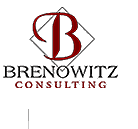


|
THEY SAID IT COULDN'T BE DONE: OD SUCCESS WITH KNOWLEDGE WORKERS by Randi S. Brenowitz, MBA, and Tracy C. Gibbons, Ph.D. This article appeared in the Conference Proceedings of the Organization Development Network Annual Conference, October 1997. Overview Although much team development work has been done in the U.S. in the past decade, very little of it has been successful with engineering organizations. We discovered and had to cope with some striking paradoxes that affect the probability of success when working with this population. The first is the difference between process work and workers, on the one hand, and knowledge work and workers on the other. By definition, manufacturing and process workers have respect for the concept of process. Because of the obvious interdependencies of the components of a process, and the relative ease of cross-training and work-sharing, process workers have been using teams for a number of years. To them, the team concept is simply part of their regular work environment. Therefore, most of the technology and literature about teams, team-development, and building collaborative work environments refer to manufacturing and/or process-driven work. In engineering and other knowledge work organizations, however, the concept of team is frequently associated with a loss of creative freedom and individuality. In an organization where the charter is to imagine and invent, the very possibility of losing the freedom to innovate is traumatic. Engineering work is not a matter of continuous improvement, but rather of creation and innovation, leading to technological and conceptual paradigm shifts; in addition, this type of work is not conducive to cross-training or pay-for-knowledge reward systems that are typical within team-based process organizations. Therefore, the technology of teams does not translate will into engineering organizations and is considered suspect by both the engineers and their management. The length of feedback loops in knowledge worker organizations is much longer than those in manufacturing organizations. On an engineering project, it may take years before one knows if the customer or marketplace thinks positively about the product. This is in contrast to "quality control" or "internal inspection" in manufacturing organizations, where feedback may be received in a matter of hours or days. Engineers are trained to be independent workers. They are often frustrated that the demands of today's technology and market-place impose structural constraints on their work environments. They prefer being measured on individual uniqueness and heroics, not on collaboration and team behavior. The complexities and demands for speed of today's market-place are among the factors that OD professionals assume will drive people toward increased collaboration and shared accountability. Paradoxically, they have the exact opposite effect on many knowledge workers. Engineers frequently engage in win-lose thinking, see communication as expressing weakness, value isolation and individual achievement, avoid conflict, and devalue social norms without understanding (or even identifying) the consequences of that behavior. The more complex a project becomes, the more an engineer wants to work in his or her own cubicle on a portion of the project, limiting any dependence on others. The very ways in which we would intuitively like to support them are often what they want least. In fact, the team-based tools and interventions OD professionals believe would be most helpful to them can make us look like (and sometimes actually be) part of the problem. Theoretical Underpinnings Three concepts have been useful to us in designing and implementing team-based interventions with knowledge-workers. The Morton Salt Box Theory. On the familiar blue cylindrical box, there is a picture of a little girl in a yellow dress, carrying an umbrella and a box of salt. The box under her arm has the same picture on it, which features the same picture, and so forth. In this infinite regression, the picture stays the same, while its size changes predictably. This model provides a metaphor for understanding patterns of organizational behavior: if you verify a pattern at one level, you can depend on seeing it at other levels. As a diagnostic tool, it reduces the need to see a particular pattern everywhere before drawing conclusions and moving forward. The opposite principle also holds true: once you create and diffuse a new pattern, it will generally recreate itself on levels other than the initial one. The Iceberg Model of Emergence. Only a small part of any iceberg is visible above the ocean's surface. If the water level drops, more of the iceberg's topography will be revealed, improving the likelihood of successful navigation. While sailors may know that they are near an iceberg (and therefore which chart to use), they cannot know the exact navigational course until they are closer and can collect and process more information. Doing work that, in effect, reduces the "water level" makes it easier to determine subsequent interventions. Rogers' Model of Change Adoption. Everett Rogers (1978; 1995) predicts that the likelihood of a change effort being sustained is based on the percentage of the target population that has embraced the change over time. When 5% has adopted a change, he calls it "embedded"--it will not go away even though it may never be completed. When 20% of a group has changed, Rogers postulates that completion is now "inevitable"--the effort cannot be stopped. This model leads us to conclude that there are advantages to introducing an intervention systematically to carefully selected sub-groups, building acceptance as quickly as possible to 5% and then 20% of the client organization. Algorithm Integrating the above three models in the context of our own experience leads to the following Formula for Success:
This formula has kept us stabilized and focused as we proceed with this work in rapidly-changing environments that demand flexibility. We go back to the formula frequently when determining next steps and direction. It has aided our ability to modify our work plans or particular tasks without sacrificing the integrity of any project or intervention or of the model itself. Documented Success Our success in working with knowledge worker organizations has been documented by Dr. Lawrence Browning, Professor of Communications at the University of Texas - Austin in a study entitled, "An Analysis of the Program to Develop a Team-Based Organization in IND." This study, based on grounded theory, analyzed the effects of a large systems change effort in a division of a Silicon Valley semiconductor corporation. This culturally diverse organization was comprised primarily of engineers engaged in product design, development and marketing. We helped transform the client's steep hierarchical organization into a team-based one that is characterized by integrity, open communication, initiative seeking, expansive-thinking, and risk-taking.
Browning's study acknowledges that "the methods for implementing
teamwork practices are like commodities. Besides being widely
available, they are generally agreed-upon work-production techniques--i.e.,
there is consensus on what one can expect from them. What's special
in this instance is that these same practices are being applied
to knowledge-workers in a setting that has had little experience
with, and a fair amount of resistance to, teamwork philosophies.
This is not a story of some exotic concepts arranged in an unheard-of
way; it is a story of implementation, of taking a fairly well-known
set of practices and making them the work methods of people who
had no experience with, or larger cultural support for, them."
Peace Corps Model Our documented success in doing this work in engineering organizations is in part based on what we now call the "Peace Corps Model of OD." The Peace Corps was innovative in many ways. Peace Corps workers live with the indigenous population. They are required to learn the language of that population, and they use only those tools that the population can learn to use. They respect the accomplishments of the natives. They are not chartered with changing the religious truths of the population. And so it is with OD work in engineering organizations. While keeping in mind the fundamental differences between process work and knowledge work, we have had to become experts in the language and culture of intuitive, analytical personality types. To the extent possible, we work with intact, cross-functional, and cross-organizational teams, acknowledging the difficulty of engineering work. We modify our processes when necessary without sacrificing our core values. Remembering that engineers pride themselves on their ability to find "bugs" and flaws, it is essential that we "walk our talk" at all times. We provide continuous support, coaching, and reinforcement to our client organizations and are always respectful of tight deadlines and the stress of "scheduling invention." We contrast the Peace Corps model with that of Missionaries and Crusaders, who scorn local beliefs, abrasively replace local customs, and feel superior to the natives. The subtle but important distinction is easily noticed by engineers. Albeit skeptically, they are typically willing to work with and respect the ideas of Peace Corps professionals--but they are ever vigilant against Missionaries and Crusaders. Congruence Although OD practitioners devote much time and energy to building team-based collaborative work environments with our clients, most of us, paradoxically, work alone. While many of us are well versed in the literature of teams, we have little experience actually participating on a team. In order for our model to work, the HR/OD/Training professionals must create a "virtual team" themselves. This requires that we engage in much the same process through which we take our clients. We must create a vision and sense of purpose for the intervention, engaging in a consensus process with others who have different perspectives from our own. We must work collaboratively without regard to status or turf. It is the ultimate in professional congruence. Difficult as it may be, the rewards for doing so are great--increased productivity, creativity, and personal growth and satisfaction. The very ones we promise our clients when helping them become high-performing work teams. References Rogers, E.M. (1995). Diffusion of innovations (4th ed.). New York: The Free Press. Browning, L. (1995). An analysis of the program to develop a team-based organization in IND. Unpublished manuscript, Partnerwerks, Inc., Austin, TX.
|
||||||||
|
||||||||